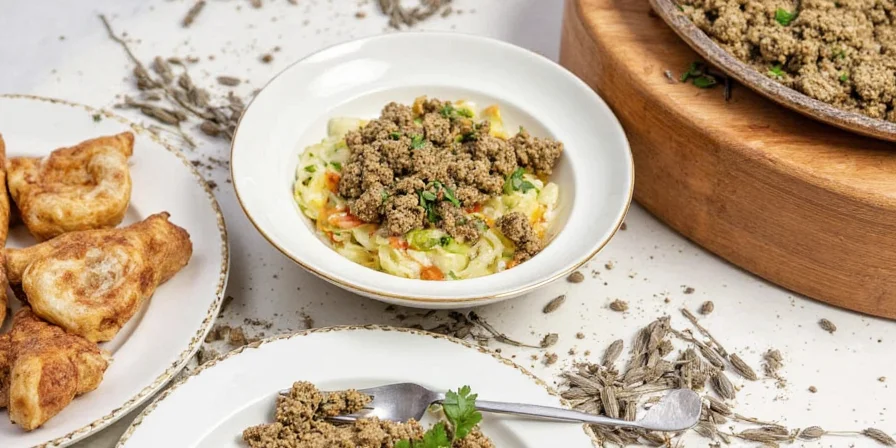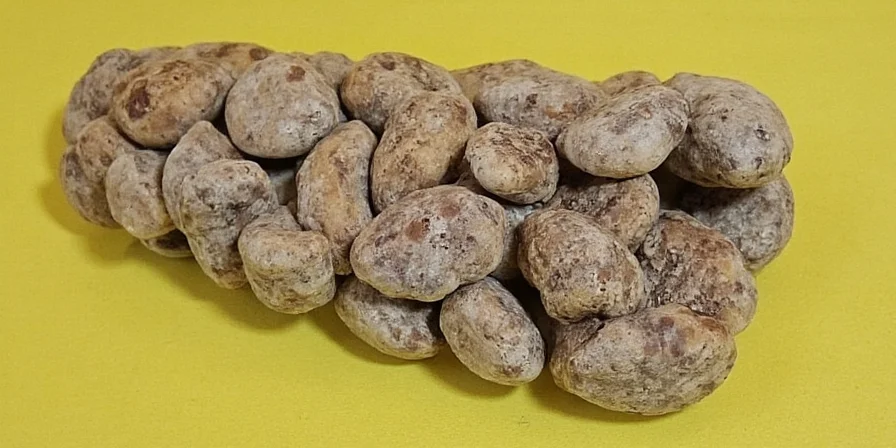Syrian Green Zaatar: A Flavor That Speaks Volumes
If you've ever tasted a warm piece of manakish topped with a fragrant sprinkle of Syrian green zaatar, you know it's more than just a spice blend—it’s a flavor-packed time capsule of Middle Eastern culinary heritage. Whether you're a spice connoisseur or simply someone who loves to dabble in global flavors, this post is your go-to guide for everything you need to know about the beloved green gem from Syria.

Table of Contents
- What Exactly Is Syrian Green Zaatar?
- A Sprinkle of History: Zaatar Through Time
- Taste Test: What Makes It So Special?
- DIY Zaatar: Mix Like a Pro
- From Dips to Desserts: Creative Uses
- Buying & Storing Tips for Maximum Mojo
- Zaatar Around the World: Regional Variations
- FAQs: Your Zaatar Queries Answered
- Final Thoughts
What Exactly Is Syrian Green Zaatar?
Syrian green zaatar—often referred to as simply “zaatar”—is not just one herb but a magical mix that typically includes:
- Dried thyme: The earthy backbone
- Sesame seeds: For that nutty crunch
- Salt: To balance and enhance
- Sumat (wildflower sumac): For tangy brightness
In some traditional blends, especially in rural areas, fresh zaatar (Origanum syriacum) might be used and dried before mixing. This version gives an even more intense herbal kick.
A Sprinkle of History: Zaatar Through Time
Zaatar isn’t just a modern pantry staple; its roots go back thousands of years. Ancient Egyptians used zaatar-like herbs for medicinal purposes, while Greeks revered it for its supposed ability to sharpen memory.
In Syria, zaatar became a symbol of hospitality and nourishment. Families would prepare their own signature blend passed down through generations. Some say it was so valued it was even traded like gold.
| Era | Cultural Use |
|---|---|
| Ancient Egypt | Medicinal paste for energy |
| Greece | Mental clarity booster |
| Ottoman Empire | Used in bread and sauces |
| Modern Syria | Breakfast table essential |

Taste Test: What Makes It So Special?
The allure of Syrian green zaatar lies in its perfect harmony of tastes:
- Earthy from thyme
- Nutty from sesame seeds
- Tangy from sumac
- Salty to tie it all together
This balance makes it versatile enough to enhance everything from flatbreads to roasted vegetables.
DIY Zaatar: Mix Like a Pro
Want to make your own authentic blend? Here's a simple recipe:
- 2 tbsp dried thyme
- 1 tbsp sumac
- 1 tbsp sesame seeds (toasted for extra flavor!)
- ½ tsp sea salt
Mix well and store in an airtight container. You can adjust ratios based on your taste!
Pro Tip:
Toast sesame seeds gently before adding them—this unlocks their full nutty potential without burning them. Low heat and patience are key!
From Dips to Desserts: Creative Uses
Think beyond manakish! Here are some fun ways to use zaatar:
- Flatbread topping: Classic and unbeatable
- Olive oil dip: Mix zaatar into olive oil for a quick dip
- Popcorn seasoning: Add a pinch for a savory twist
- Pasta boost: Sprinkle over buttered pasta for instant gourmet vibes
- Dessert surprise: Try it in shortbread cookies for a herby contrast

Buying & Storing Tips for Maximum Mojo
Looking to buy quality zaatar? Here’s what to watch for:
| Factor | Quality Indicator |
|---|---|
| Color | Vibrant green, not faded or brownish |
| Smell | Earthy, aromatic, and fresh |
| Texture | Crumbly, not clumpy or powdery |
Storage tips:
- Store in a cool, dark place
- Use within 6 months for best flavor
- Keep in an airtight jar to preserve freshness
Zaatar Around the World: Regional Variations
While Syrian zaatar is perhaps the most famous, different regions have their own versions:
- Lebanese Zaatar: Often includes more sumac and less thyme
- Jordanian Zaatar: May include mint or oregano
- Palestinian Zaatar: Uses wild thyme and sometimes dried marjoram
- Greek Zaatar: Similar to za’atar but often mixed with olive oil and spread on pita
- North African Ras el Hanout: Not zaatar per se, but uses similar principles of spice blending
FAQs: Your Zaatar Queries Answered
Q: Can I substitute zaatar in recipes?
A: Yes! If you don't have zaatar, try combining oregano, thyme, lemon zest, and a dash of sumac.
Q: Is zaatar good for health?
A: Absolutely! Thyme contains antioxidants, and sumac has anti-inflammatory properties.
Q: Can I grow my own zaatar plant?
A: Origanum syriacum can be grown in sunny, dry climates. Perfect for Mediterranean gardens!
Q: How spicy is zaatar?
A: Not spicy at all! It’s more earthy and tangy than hot.
Conclusion: More Than Just a Spice—It’s a Story
Syrian green zaatar isn’t just a blend of herbs and spices; it’s a cultural bridge, a morning ritual, and a flavor symphony all rolled into one. Whether you’re sprinkling it onto warm flatbreads or experimenting with zaatar-seasoned cocktails (yes, that’s a thing!), there’s no wrong way to enjoy this vibrant green powerhouse.
So next time you reach for that little jar on your shelf, remember—you're not just grabbing a spice. You're holding centuries of tradition, care, and culinary craftsmanship. And hey, if nothing else, at least you’ll always have a killer excuse to eat more bread.










 浙公网安备
33010002000092号
浙公网安备
33010002000092号 浙B2-20120091-4
浙B2-20120091-4